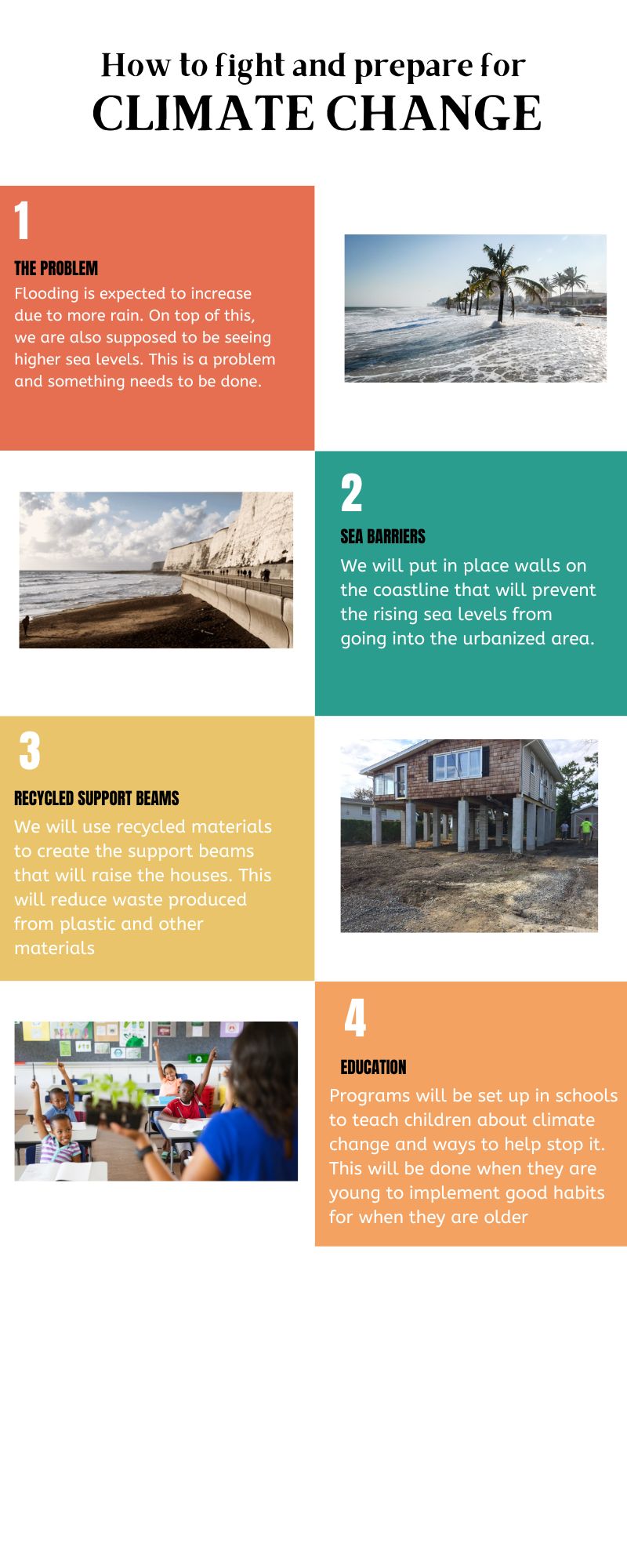In the next 75 years, flooding is expected to grow due to rising temperatures and changing patterns of rainfall. In the past century, New Jersey's average annual precipitation has grown by 5% to 10%. The sea levels are also expected to rise a few feet due to more rain and melting glaciers. Houses that aren’t raised will be destroyed by flooding. Homes and wildlife will be destroyed, leaving displaced people and animals. There are two possible solutions that can be used to reduce these problems: educate young kids and prepare areas near the coast.
Education programs will be set up in schools to teach kids ways to reduce climate change. This will be done when the kids are young so that they will have good habits for the rest of their lives.
In coastal areas, houses will be raised by beams built of recycled material to sustain flooding. This will be helpful to reuse and recycle products with less waste. Near beaches, barriers can be put in place on the edge of the beach to prevent flooding from the ocean.
By implementing these preparations, the effect of flooding and rising sea levels will be reduced in the areas at risk.
Contact us
Thank you for your interest in contacting Future Engineers. We look forward to connecting with you!
General Inquiries
support@futureengineers.orgSponsorship Inquiries
sponsor@futureengineers.org
